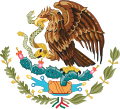| Battle of Zitlala | |||||||
|---|---|---|---|---|---|---|---|
| Part of the Mexican War of Independence | |||||||
 The town of Chilpancingo, from where the Mexican insurgent soldiers that participated in the action marched. | |||||||
| |||||||
| Belligerents | |||||||
| Mexican Rebels | | ||||||
| Commanders and leaders | |||||||
| José María Morelos Hermenegildo Galeana | | ||||||
| Strength | |||||||
| Unknown | 50 | ||||||
| History of Mexico |
|---|
 |
| Timeline |
The Battle of Zitlala took place during the War of Mexican Independence on 4 July 1812 in the outskirts of Zitlala, Guerrero. The battle was fought between the royalist forces loyal to the Spanish crown, and the Mexican rebels fighting for independence from the Spanish Empire. The battle resulted in a victory for the Mexican rebels.